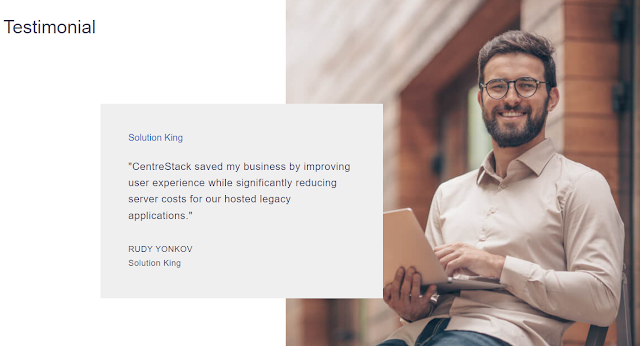How to Triple Hosted Legacy Application Performance
Challenges of Legacy Application Modernization
Legacy application migration often presents a prohibitive set of challenges for businesses seeking to modernize and adapt their applications with best-of-breed cloud services, such as AWS, Azure, and Google Cloud Platform. Despite the compelling business drivers pushing them to complete digital transformation the cost and complexity of rebuilding these legacy applications to become cloud-native often forces them to seek alternatives.For example, an organization may decide to migrate QuickBooks
or an ERP application from local servers to Azure virtual machines or AWS EC2
servers. This will allow them to enjoy some of the benefits of cloud migration with
the main areas of focus being the compute, networking, and storage requirements
for the migration.
Reducing Network and Compute Requirements for Hosted Legacy Applications with
CentreStack
After the lift and shift migration is completed, users will
typically access the hosted legacy application through a VPN connection or remote
desktop services. Despite the broad acceptance of these connection methods, they
lead to performance bottlenecks that can be eliminated with CentreStack.
Reducing Compute Requirements
When a legacy application is accessed through a published desktop,
users tend to create performance problems as they use other applications that place
high demands on the compute resources. A common example is web browsing with
applications like Google Chrome. As users open multiple tabs in the browser while
they work, they will notice significant degradation of performance as the
number of user sessions quickly approaches the well-known limits of terminal
servers. Providing a mapped drive on the user’s endpoint solves this problem by
offloading file browsing and web browsing to the user’s local desktop and publishing
just the application instead of the entire desktop.
Reducing Network Requirements
Alternatively, when users establish a VPN connection to the server, mapping a drive using the CIFS/SMB protocol can significantly increase the network load as users browse and access files. CentreStack provides a proprietary streaming protocol that is embedded in HTTPS. This significantly increases performance for the end-users and dramatically reduces bandwidth consumption.
The following diagram provides a high-level view of the basic architecture where the servers hosting the files and folders could be on-premises (as shown in the diagram) or lifted and shifted to a cloud data center.
CASE STUDY: Increasing Terminal Server Scalability by 300%
Rudy Yonkov is a Gladinet partner that runs an IT solution provider called Solution King. Their services include software development, hardware infrastructure, and enterprise-level hosting. Before becoming a Gladinet partner, his company built a practice that hosted Quickbooks, ERP, and other
legacy applications on Azure virtual machines for customers. At first, they published desktops to provide remote access but then ran into the
following problems.
- Users started to complain about very sluggish performance
- Terminal servers were approaching scalability limits averaging 40 sessions per server
- End users were running resource-intensive applications Google Chrome with many tabs open
- Needed to add more servers which increased costs
- CentreStack’s File System Driver Based Mapped Drive boosted Terminal Server scalability 300% by :
- Reducing the average number of sessions from 40 to 12 per terminal server
- Allowing users to seamlessly browse and access files from their desktops
- Running non-critical, resource-intensive applications like Google Chrome on the user's desktop
- Mapped drives proved far faster Gladinet's streaming HTTPS protocol than with VPN
- Ability to manage, secure and control endpoint (auditing, reporting, ransomware
protection, etc...)
“CentreStack saved my business by improving user experience while significantly reducing server costs for our hosted legacy applications." - Rudy Yonkov, Solution King
To learn more about this or other CentreStack use cases, schedule
some time with me here: https://calendly.com/franklyn-peart






Comments